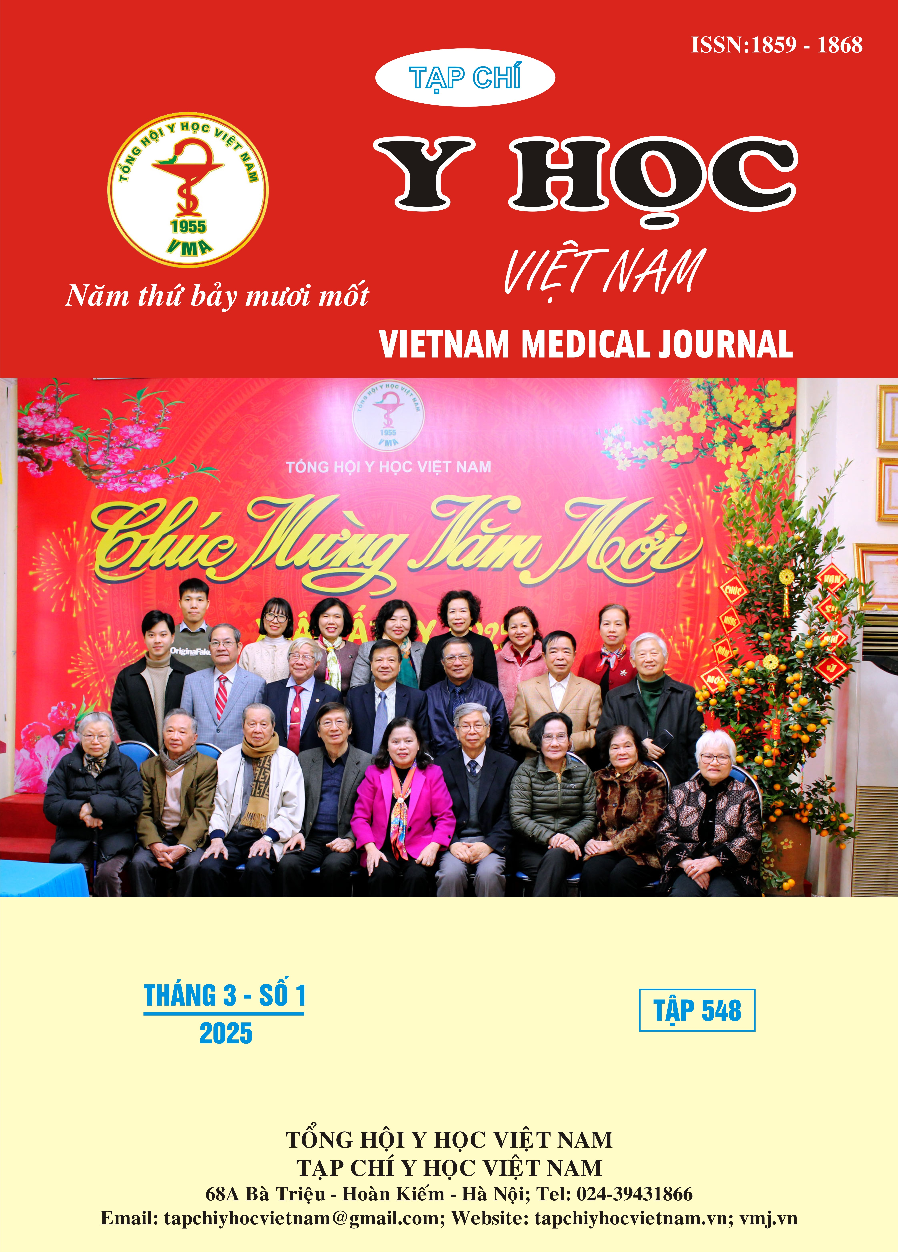RESULT OF EARLY POSTOPERATIVE IN PATIENTS USING ICG FOR TOTAL LAPAROSCOPIC GASTRECTOMY TO TREAT GASTRIC CARCINOMA
Main Article Content
Abstract
Objectives: Evaluation of early postoperative results in patients undergoing laparoscopic gastrectomy using ICG injection to support the treatment of gastric carcinoma at Hanoi Medical University Hospital. Methods: Prospective descriptive study on 12 patients with gastric carcinoma who underwent laparoscopic gastrectomy using ICG injection. Results and discussion: The average age was 69.83 ± 11.04. The male/female ratio was 1/1. The average surgical time was 161.67 ± 32.35 minutes, 1 case had to be converted to open surgery, the average number of dissected lymph nodes was 28.4 ± 9, and there were no cases of postoperative complications. Conclusions: Laparoscopic gastrectomy with ICG injection is a safe and effective method in the treatment of gastric carcinoma.
Article Details
Keywords
gastric cancer, Indo cyanin Green
References
2. Kim TH, Kong SH, Park JH, et al. Assessment of the Completeness of Lymph Node Dissection Using Near-infrared Imaging with Indocyanine Green in Laparoscopic Gastrectomy for Gastric Cancer. J Gastric Cancer. 2018;18(2):161. doi:10.5230/jgc.2018.18.e19
3. Bissolati M, Desio M, Rosa F, et al. Risk factor analysis for involvement of resection margins in gastric and esophagogastric junction cancer: an Italian multicenter study. Gastric Cancer. 2017; 20(1):70-82. doi:10.1007/s10120-015-0589-6
4. Kim MG, Lee JH, Ha TK, Kwon SJ. The distance of proximal resection margin dose not significantly influence on the prognosis of gastric cancer patients after curative resection. Ann Surg Treat Res. 2014;87(5):223. doi:10.4174/ astr.2014.87.5.223
5. Ushimaru Y, Omori T, Fujiwara Y, et al. The Feasibility and Safety of Preoperative Fluorescence Marking with Indocyanine Green (ICG) in Laparoscopic Gastrectomy for Gastric Cancer. J Gastrointest Surg. 2019;23(3):468-476. doi:10.1007/s11605-018-3900-0
6. Vahrmeijer AL, Hutteman M, Van Der Vorst JR, Van De Velde CJH, Frangioni JV. Image-guided cancer surgery using near-infrared fluorescence. Nat Rev Clin Oncol. 2013;10(9):507-518. doi:10.1038/nrclinonc.2013.123
7. Miyashiro I, Kishi K, Yano M, et al. Laparoscopic detection of sentinel node in gastric cancer surgery by indocyanine green fluorescence imaging. Surg Endosc. 2011;25(5):1672-1676. doi:10.1007/s00464-010-1405-3
8. Chen QY, Xie JW, Zhong Q, et al. Safety and Efficacy of Indocyanine Green Tracer-Guided Lymph Node Dissection During Laparoscopic Radical Gastrectomy in Patients With Gastric Cancer: A Randomized Clinical Trial. JAMA Surg. 2020;155(4):300. doi:10.1001/jamasurg.2019.6033
9. Kwon IG, Son T, Kim HI, Hyung WJ. Fluorescent Lymphography–Guided Lymphadenectomy During Robotic Radical Gastrectomy for Gastric Cancer. JAMA Surg. 2019;154(2):150. doi:10.1001/jamasurg.2018.4267
10. Lan YT, Huang KH, Chen PH, et al. A pilot study of lymph node mapping with indocyanine green in robotic gastrectomy for gastric cancer. SAGE Open Med. 2017;5:2050312117727444. doi:10.1177/2050312117727444


